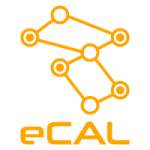Eclipse Ambient Light Services
Project was initially generated in order to gain know-how when it comes to the definition of Autosar-Standards with the goal to create a functional show-case.
Eclipse Ambient Light Services provide an expandable SW core-stack implementing Autosar interfaces and allowing to visualize specific ambient light service. This project can be extended with additional functions, like e.g. Apps or other additional functions/ alternatives. Also it is intended that the developer has the option to e.g. vizualize quickly different options and or combinations.
The Eclipse Ambient Light Services showcase vizualizes possible new lighting concepts which are adaptive to different specific driving scenarios, like e.g. coming and leaving but also further options are possible. It was developed as an AUTOSAR SW component in order to be easiliy transferable to other different vehicle platforms based on AUTOSAR classic. It plays light animation scenes for welcoming and leaving scenarios of the driver. It uses a dataset which contains different animation scenarios. The described scenarios are expandeble through our developed easy data set creation scenario modifier.
This type of SW-stack is unique in terms of control of light functions. This is the bridge to the SDV. The existing 7 projects of Eclipse SDV may be subdivided in 3 groups: middleware projects, SW-development surfaces und pedagogical/distribution activities. Eclipse Ambient light services would provide a 4th pillar of Eclipse SDV namely an application software stack dealing with an illumination functions of a car. We do expect that future interested members will contribute new application ideas for the illuminating automotive elements. Furthermore we expect the SW-structure of Eclipse Ambient Light Services to be transferred to other existing automotive elements using them in completely new ways.
no legal issues
The currently available source code shall be made accessible in the 4th quarter of 2022. The first build may be expected during 1st quarter of 2023.
We do expect that future interested members will contribute new application ideas for the illuminating automotive elements. Furthermore we expect the SW-structure of Eclipse Ambient Light Services to be transferred to other existing automotive elements using them in completely new ways.
OEMs
To be defined
- Read more about Eclipse Ambient Light Services
- Log in to post comments






